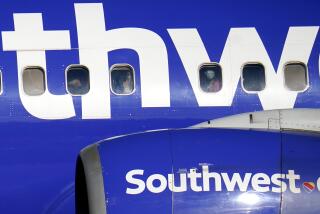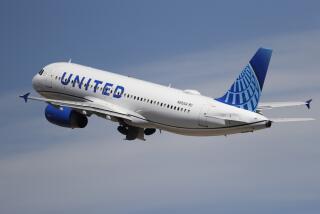Appeals Panel Finds Airline’s Weight Rules Were Biased
- Share via
A three-judge panel of the 9th Circuit Court of Appeals said United Airlines clearly erred when it established different weight requirements for men and women in a policy that lasted from 1980 to 1994.
“The bias against female flight attendants infected United’s weight maximums for all age groups,” the majority opinion said.
“Because of this consistent difference in treatment of women and men, we conclude that United’s weight policy between 1980 and 1994 was [on the face of it] discriminatory.”
Edith Benay, the attorney who represented the flight attendants in the class action suit, said the appeals court decision was a victory for thousands of women who had sought to make a career at the airline but found themselves unable over time to conform to unfair physical requirements.
“Women had to take really extreme measures,” Benay said. “We had testimony from women who gave blood more than once in a day, because they figured out that blood could weigh as much as a pound on the scale at a weigh-in.”
United’s weight policy, which was abandoned in 1994 about the time that many other airlines dropped their weight limits, required female flight attendants to weigh between 14 and 25 pounds less than their male counterparts.
The court said a comparison of male and female weight charts showed that the men’s maximum weights were generally set to reflect large body types, while the maximum weights for women were set for medium body types.
Rejecting most of an earlier decision on the case, the appeals court judges said the lower court had been wrong to exclude the suit on the basis of a 1979 decision that found a different United weight policy nondiscriminatory.
Officials at United, a division of UAL Corp., said they were reviewing the ruling and had no immediate comment.
More to Read
Inside the business of entertainment
The Wide Shot brings you news, analysis and insights on everything from streaming wars to production — and what it all means for the future.
You may occasionally receive promotional content from the Los Angeles Times.










